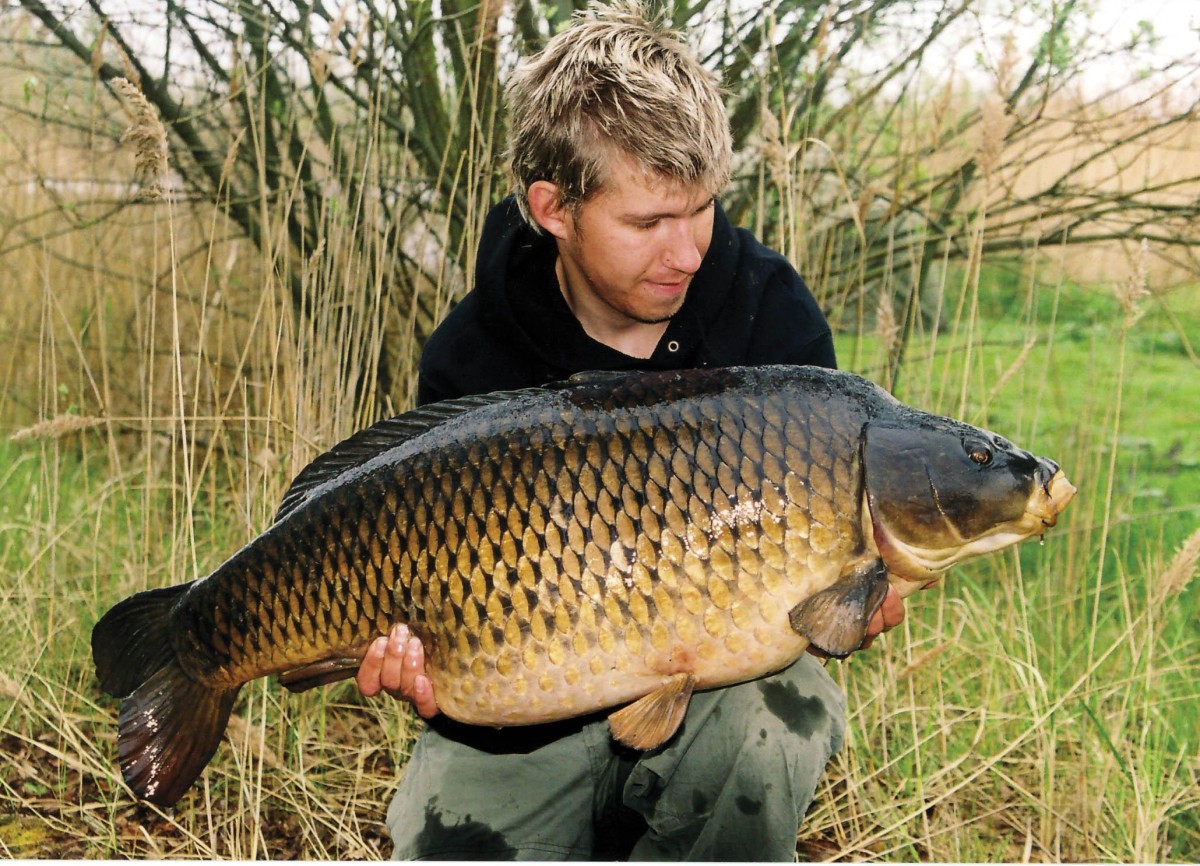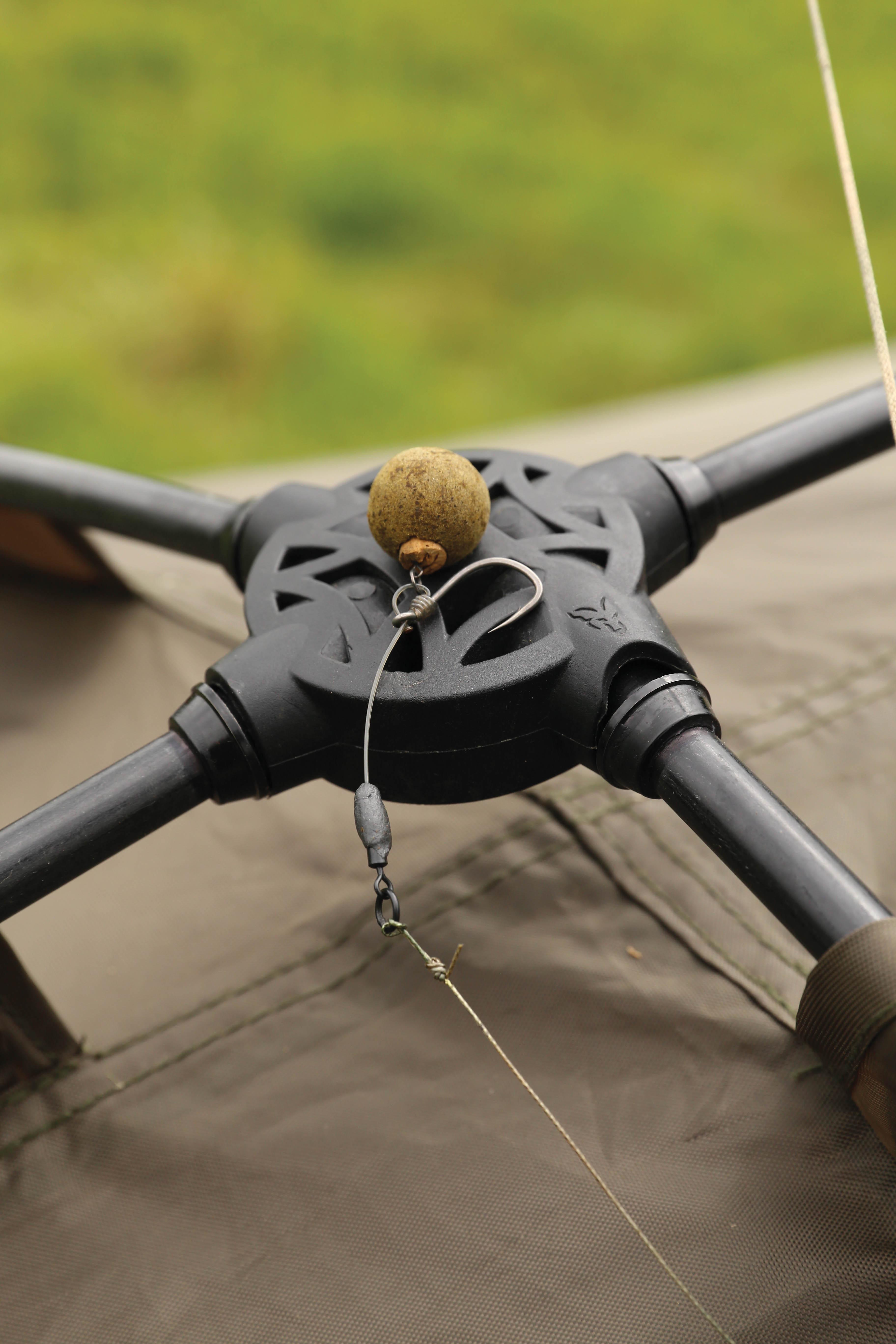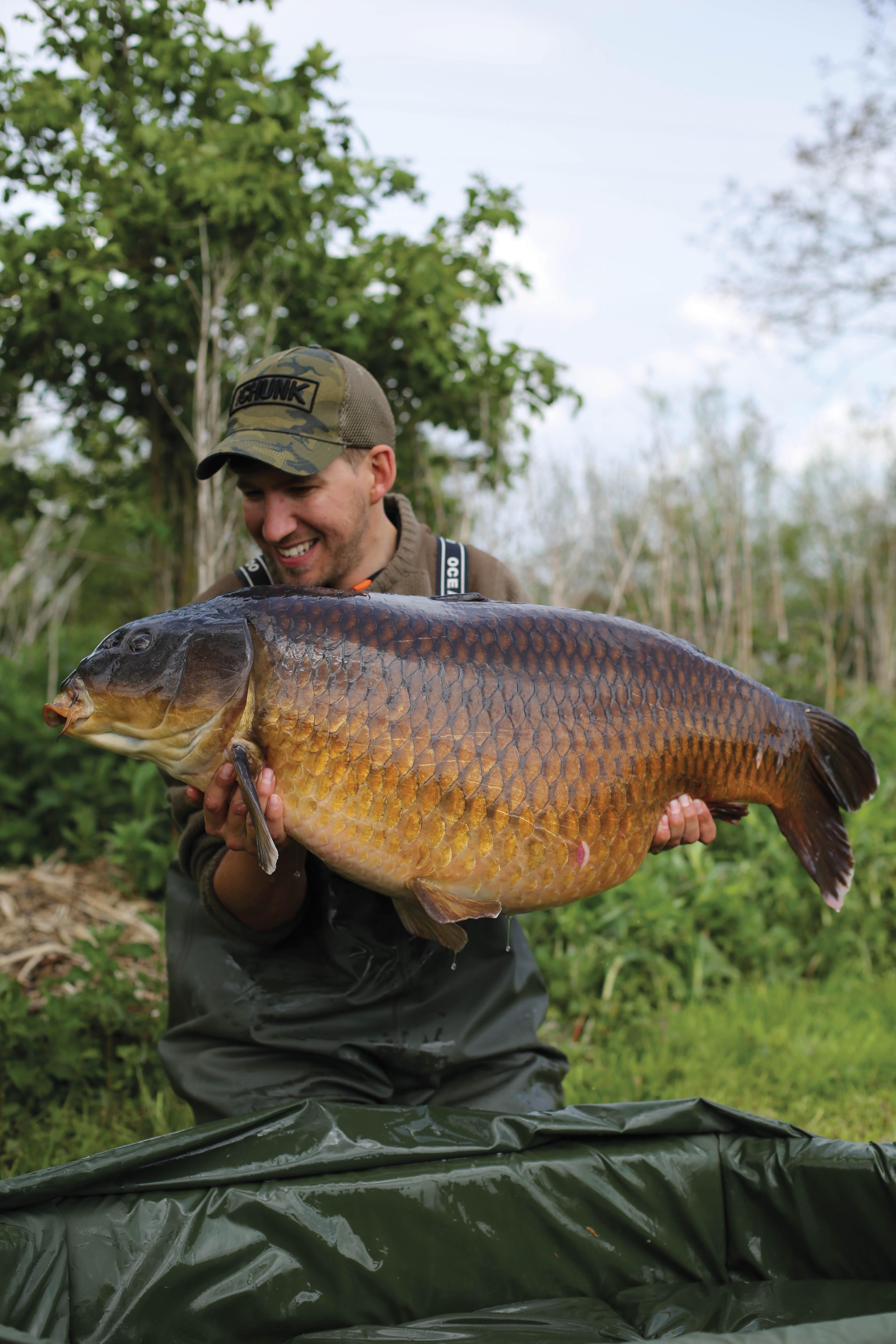
Rigs According To Lewis Porter
Fox’s European Group Marketing Director and big-fish angler, Lewis Porter discusses cumbersome-looking rigs, heavy leads and outwitting cute carp with two-bait stringers
Do you think we now focus too much on the mechanics of a rig, and have forgotten the importance of stealth? Surely, a carp that doesn’t sense fear will be easier to hook…
“No, I don’t think so. I think good anglers take into account all factors, and ensure they are using rigs that are effective, both in terms of stealth and mechanics. For example, two of my favourite presentations are the Hinged Stiff Rig and the 360º Rig, both of which contain a fair bit of metal work (including big hooks—size 2-4) and are certainly more cumbersome to look at than a standard Knotless Knot. However, both rigs are fished with pop-up hookbaits which means the hook and swivels are hidden beneath the bait so as a carp approaches the rig it is not aware of them. When it comes to hooklink materials, there is a growing trend towards using fluorocarbon or mono, both of which tend to be more stealthy across a magnitude of lakebeds compared to braid or coated braid, so no, I don’t think anglers have forgotten the importance
of stealth.”
Do you remember the first time you caught a carp by doing something new, that you’d not seen before?
“It wasn’t something that I hadn’t seen before, but it was something that I used for the first time and that the fish I was angling for hadn’t really seen. It was early 2000 on Patstons Lake at Northey Park in Peterborough, which I had joined in the pursuit of a stunning common called Kitch. The fish had done 35lb the previous spring so not only was it a stunner, but was also very big for the area at the time.
“On this particular lake, there was a fairly sizable out-of-bounds area where you could watch the fish acting nice and chilled. I used to go around to this area and feed the fish some of my boilies as I believed if they ate them for ‘free’ in the out-of-bounds, they would be less cautious eating them when they encountered them on spots situated on the edge of this no-fishing zone. I could quite often find Kitch in this out-of-bounds area and on a few occasions I got her feeding on my freebies.
“What became apparent very quickly, was Kitch would only ever eat a maximum of 4 boilies in any one sitting. She would drop down, pick off 3 or 4 baits, upright, swim away, and then return 5-10 minutes later and repeat the process. Often, if there were greedier, smaller fish present, a kilo of boilies could be gone before Kitch returned for her second round of 3-4 baits.
“With this in mind, I set about using a ‘stringer-only’ approach. I placed two boilies on some PVA string and then fished a double 14mm bottom-bait hookbait. This meant that there were only 4 baits to eat: two free ones and then two attached to my hook. These stringers were fished on spots right on the edge of the no-fishing zone, as close to the areas I had previously fed the big common. My hope was as soon as Kitch left the out-of-bounds she would drop down for her 4 boilies, and if she did, she had no option but to pick up my rig.
“The first session of using this tactic I caught Kitch at 39lb, so I guess you could say it was effective. In fact, I actually caught her a further two times over the following 18 months and both times she fell to stringers!”

Do you have a particular rig that stands out from the rest, one that increased your catch-rate significantly from the moment you used it, perhaps?
“Two for sure: the Hinged Stiff Rig and the 360º Rig, both were game-changers for me once I added them into my armoury. I fished one particular tricky, small lake around 2008-10, that some very good anglers were doing 50+ nights on for no bites. During my first season on the lake, I never caught a fish, and I think it did about 30 bites all year. During my second season on the lake, I started to use Hinged Stiff Rigs and 360º Rigs and managed to catch 10 fish—the lake that season did less than 40 fish across the whole membership. Back then I kept things very secretive as the venue was so hard and cliquey—and I remember one member telling me that there is no way the fish would take a Hinged Stiff Rig in there, as it was way too blatant and the fish way too clever to fall for it. The success on those rigs that year changed my carp fishing forever, and those two rigs are still my A-game to this day.”
When it comes to fishing in silt, what is your preferred hookbait—pop-up, wafter, one straight out of the bag or a weighted bottom bait?
“It depends on how thick the silt is. If it is really deep, sludgy, soft black stuff then I avoid fishing in it, as that to me suggests the carp have not fed there in recent times. I prefer to find firm areas, as (a) the presentation is better, but mainly (b) if it is a zone they are already using to feeding on, that is a big step closer to catching them. Location, location, location! So, if I am fishing on firm silt, then I tend to go with either a low-lying pop-up presented on a 360º Rig or a fluorocarbon D-Rig with a bottom-bait hookbait—normally a boilie or tiger
nut hookbait.”
How reluctant, or perhaps keen are you, to tweak your rigs? What indicators tell you that it’s time to change something… how do you know?
“I will only change something if I haven’t had a bite when I think I should have. If I have fish showing, fizzing, etc. on me and I don’t get a bite after an hour or two, then I would look to make a change. Sometimes that change may be as simple as a re-cast, or it might be a rig or hookbait change. For example, if I was fishing a 360º Rig and the fish were clearly feeding on me, sending up sheets of bubbles but no bites were forthcoming, then I would work on the assumption that they are feeding hard on the silt and my little pop-up is just too far off of the deck to get their interest. So in that instance, I would change over to a fluorocarbon D-Rig with a bottom bait on in the hope that a bait hard on the deck was more likely to be sucked in.”
When does lead shape and size become important? What factors dictate a change?
“Several years ago Rob Hughes did some diving work for us. He reported that he could put the point of a hook on his finger and could start to lift leads of certain sizes off of the lakebed without the hook being forced deeper into his finger (he is wearing diving gloves here, not placing the hook into flesh). He said that only once the lead was 4oz and above could he no longer do this. Anything 4oz or heavier would mean the hook was driven into his finger as soon as he tried to lift it from the lakebed. Ever since that day, I have avoided using leads under 4oz like the plague, as I am in no doubt that lighter leads give the fish a better chance of shaking the rig out without getting hooked.
“Sadly some lakes I fish have rules stating that 3.5oz is the maximum size you can use, so I have to sacrifice some efficiency to comply with rules, but if ever I have the choice, I am using 4 or 5oz minimum.
“Regarding shape, if I need to fish ultimate range I will use a weight-forward distance lead like a Fox Edges Horizon Lead; if I am fishing short- to medium-range then I like a shorter dumpier lead, such as the Edges Tri-Pear.”




